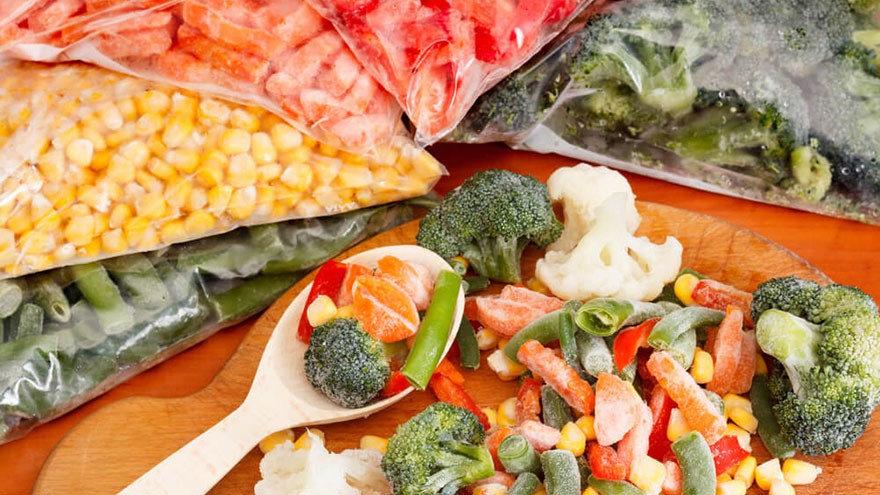How to Freeze Fresh Vegetables
While it’s true frozen vegetables found in grocery stores are generally of high quality, there are still benefits to freezing your own: It’s cheaper. It’s a great way to make use of bargains at grocery stores and farmer’s markets.
It’s a good way to preserve your home vegetable garden harvest. And it’s easy and doesn’t take nearly as much time as canning. It also requires no special tools. Just be sure to pick high quality, fresh produce, freezing it as soon as possible after picking or bringing home.
How to Prep Fresh Vegetables
Start by thoroughly cleaning the kitchen sink. Then assemble all your tools: a large pot with a well-fitted lid, a cutting board and knife, a strainer or colander, freezer containers and markers and ice.
Fill the pot with water and place it on the range under high heat while you prep the vegetables.
Wash the vegetable you’ll be freezing, and trim off any parts you don’t want. Also cut the vegetables down to manageable size. For example, you probably want to chop broccoli into approximately bit-sized pieces.
How to Blanch Fresh Vegetables
Once the vegetables are ready and the water in the pot is boiling, toss in about 1 pound or less of the vegetable and begin timing the cooking immediately. This technique is called “blanching.” Use the list below to determine how long you should blanch any given vegetable.
While the vegetables blanch, fill the sink with ice and a little cold water.
When the vegetables are done boiling, immediately remove the pot from the range and strain the vegetables. Dump the veggies in the sink of ice. They should become cool to the touch almost instantly. If they don’t, add a little cold water.

Freezing Fresh Vegetables
When the vegetables are cool (it only takes a minute or two, tops), strain them and place in freezer containers. Mark the containers with the name of the vegetable and the date they were frozen.
Use the home-frozen vegetables within 18 months.
Feel free to re-use the blanching water if you have more of the same vegetable to prepare.
Blanching Times for Fresh Vegetables
- Asparagus (medium) : 2 Minutes
- Basil : 1 Minute (other herbs may be frozen without blanching)
- Beans (whole) : 3 Minutes
- Beans (chopped) : 2 Minutes
- Broccoli : 3 Minutes
- Brussel Sprouts (medium) : 4 Minutes
- Cabbage (wedges) : 3 Minutes
- Cabbage (shredded) : 1 Minutes
- Carrots (whole) : 5 Minutes
- Carrots (chopped) : 2 Minutes
- Cauliflower (chopped) : 3 Minutes, add 1 T. vinegar to the blanching water
- Corn on the Cob (medium) : 8 Minutes
- Kohlrabi (slices) : 2 Minutes
- Kohlrabi (stems) : 3 Minutes
- Okra (small pods) : 3 Minutes
- Peas : 1 1/2 Minutes
- Onions & Leeks : Freeze without blanching
- Peppers : Freeze without blanching
- New Potatoes (whole) : 5 Minutes
- Other types of Potatoes : Grate and freeze without blanching
- Zucchini : 3 Minutes, or grate and freeze without blanching
Check out the video version of this article on YouTube

